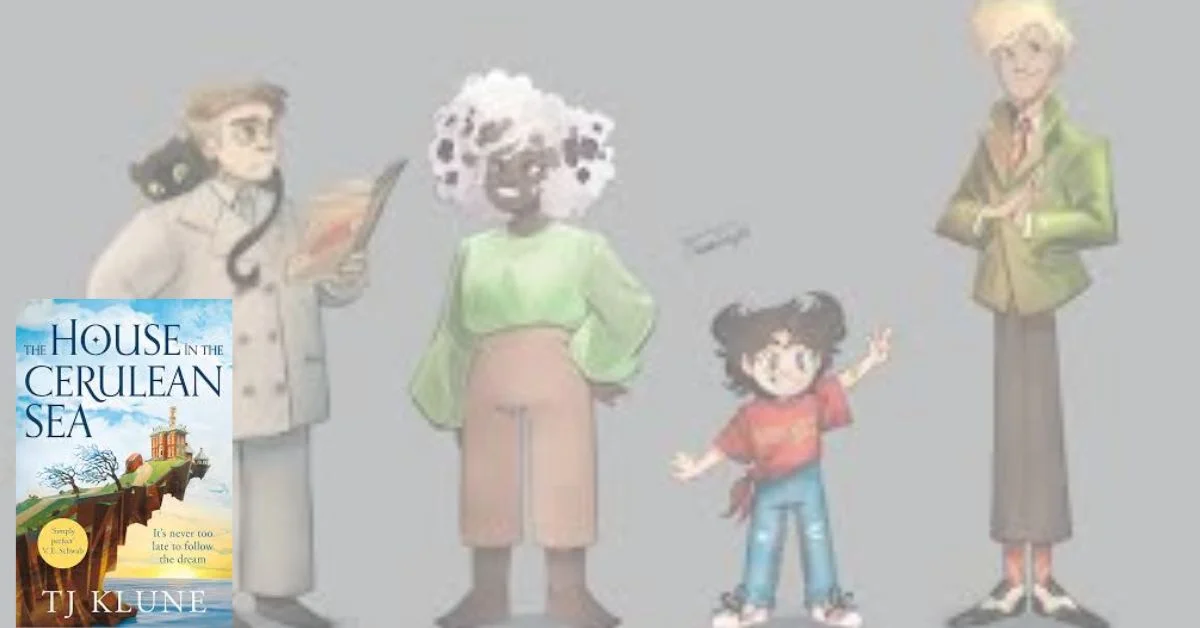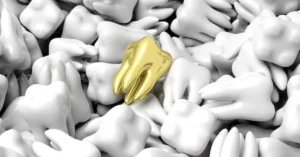Each chapter of The House in the Cerulean Sea fulfils the author’s promise of providing a feel-good read that combines sentimentality, wit, and profound insight. Thanks to its welcoming tone, inclusive plot, and profound message of acceptance, this 2020 fantasy book by renowned author T.J. Klune has won the hearts of readers all around the globe. Discover the enchantment of The House in the Cerulean Sea, its universal appeal, and its rise to the top of contemporary fantasy fiction in this article.
About the Author: T.J. Klune’s Impact on Queer Literature
Author T.J. Klune won the Lambda Literary Award for his work in LGBTQ+ literature. Klune, who is out as homosexual, has made a living as a writer who writes on LGBT positivity, acceptance, and healing.
Notable Works:
- The Extraordinaries series
- Under the Whispering Door
- In the Lives of Puppets
Not only has Klune’s steadfast dedication to diversity in narrative garnered accolades, but so has his tender writing and fascinating locations. He further establishes himself as a pivotal character in queer-inclusive fantasy with The House in the Cerulean Sea.
Synopsis of The House in the Cerulean Sea
An older caseworker for the DCOMY (Department in Charge of Magical Youth), Linus Baker is the protagonist of this narrative. Following orders and keeping his emotions at arm’s length characterise Linus’s existence. His luck changes when he gets the task of evaluating a distant island orphanage, where six youngsters with extraordinary abilities live and who may hold the key to apocalypse.
Key Plot Points:
- Linus meets Arthur Parnassus, the caretaker of the orphanage.
- The children include a gnome, a wyvern, a sprite, and even the Antichrist (a child named Lucy).
- Linus slowly opens his heart and begins to question DICOMY’s intentions.
- The novel culminates in Linus learning to live with love, joy, and found family.
Klune crafts a story that’s equal parts fantasy, romance, satire, and social commentary.
Core Characters and Their Significance
1. Linus Baker
A bureaucrat who follows the rules. His journey is one of personal growth, compassion, and rebirth.
2. Arthur Parnassus
The mysterious and fiercely protective headmaster who holds secrets—and a strong moral compass.
3. Lucy (Lucifer)
Despite being the Antichrist, Lucy is sweet, funny, and philosophical—a metaphor for the danger of labeling individuals based on fear.
4. Sal, Talia, Theodore, Chauncey, and Phee
Each child represents diversity and difference, challenging stereotypes and societal norms.
These characters are symbolic and deeply human, despite their magical origins.
Major Themes Explored in the Novel
1. Found Family
At its core, the novel is about the family we choose, not the one we’re born into. Each character finds belonging and unconditional love.
2. Prejudice and Fear of the Other
Fear of the magical children stems from preconceived notions rather than any real threat they may pose.
3. Bureaucracy vs. Individuality
Linus’s job represents blind compliance; his transformation showcases the power of standing up for what’s right.
4. Compassion as Resistance
As revolutionary gestures in a sometimes unfair world, the novel encourages empathy, generosity, and inquiry.
Representation and Inclusivity
T.J. Klune has been vocal about wanting to create “a world where queer people are celebrated.” This is evident in how:
- Linus and Arthur’s romance unfolds naturally and respectfully.
- Diverse body types, neurodivergence, and emotional trauma are depicted with care.
- Children with magical identities reflect real-world marginalized groups.
Klune normalizes queerness and difference without making it the sole focus—making the story inclusive without being issue-driven.
Literary Style and World-Building
The House in the Cerulean Sea uses a style that’s often compared to:
- Douglas Adams (for quirky wit)
- Neil Gaiman (for fantastical elements)
- Lemony Snicket (for dry, observational humor)
The island and orphanage feel whimsical yet grounded, with descriptions that evoke peace, magic, and emotional warmth.
Noteworthy Writing Techniques:
- Short chapters with strong pacing
- Dialogue-rich scenes that reveal character
- Use of color imagery (cerulean = peace, magic)
Critical Reception and Reader Reviews
The book has received critical acclaim and a near-cult following.
Review Highlights:
- ★★★★★ from Goodreads (average rating: 4.5/5 from 350,000+ readers)
- Named a New York Times bestseller
- Endorsed by librarians, educators, and mental health advocates
Critics and readers agree it’s a book that soothes and inspires, especially during uncertain times.
Real-World Lessons from The House in the Cerulean Sea
While a fantasy, the book mirrors real societal challenges:
- The dangers of institutional prejudice
- The need to question authority
- The healing power of human (and magical) connection
- How joy and play are vital forms of resistance
Readers often find themselves reflecting on their own biases, relationships, and values.
Similar Books and Where to Read More
If you loved The House in the Cerulean Sea, you might also enjoy:
- Under the Whispering Door by T.J. Klune
- Eleanor Oliphant Is Completely Fine by Gail Honeyman
- The Midnight Library by Matt Haig
- Every Heart a Doorway by Seanan McGuire
- A Man Called Ove by Fredrik Backman
You can purchase the book via:
- Amazon
- Bookshop.org
- Local independent bookstores
Conclusion: A Novel That Stays With You
An invitation to view the world through the prism of compassion, inquiry, and chosen family—that is both kind and profound—is what The House in the Cerulean Sea is all about. In spite of the dangers, it gives hope through its compelling storyline, thought-provoking topics, and memorable characters.
This work is an absolute must-read for anybody seeking a narrative that will both soothe the soul and stimulate the mind.
Frequently Asked Questions (FAQs)
Q1: Is The House in the Cerulean Sea appropriate for younger readers?
A1: It’s marketed as adult fiction, but many teens and mature middle-grade readers can enjoy it. Themes of prejudice and bureaucracy are handled delicately.
Q2: Is there a sequel to The House in the Cerulean Sea?
A2: Currently, no. T.J. Klune has said the story is complete, but fans hope for a return to the universe.
Q3: Is the book LGBTQ+ friendly?
A3: Absolutely. The story includes a wholesome gay romance and emphasizes inclusivity and self-acceptance.
Q4: Why is it called The House in the Cerulean Sea?
A4: The title refers to the orphanage’s peaceful seaside location, symbolizing hope and safety.
Q5: Has the book been adapted into a movie or series?
A5: Not yet, but its popularity has led to speculation about future adaptations.
For more information, click here.









